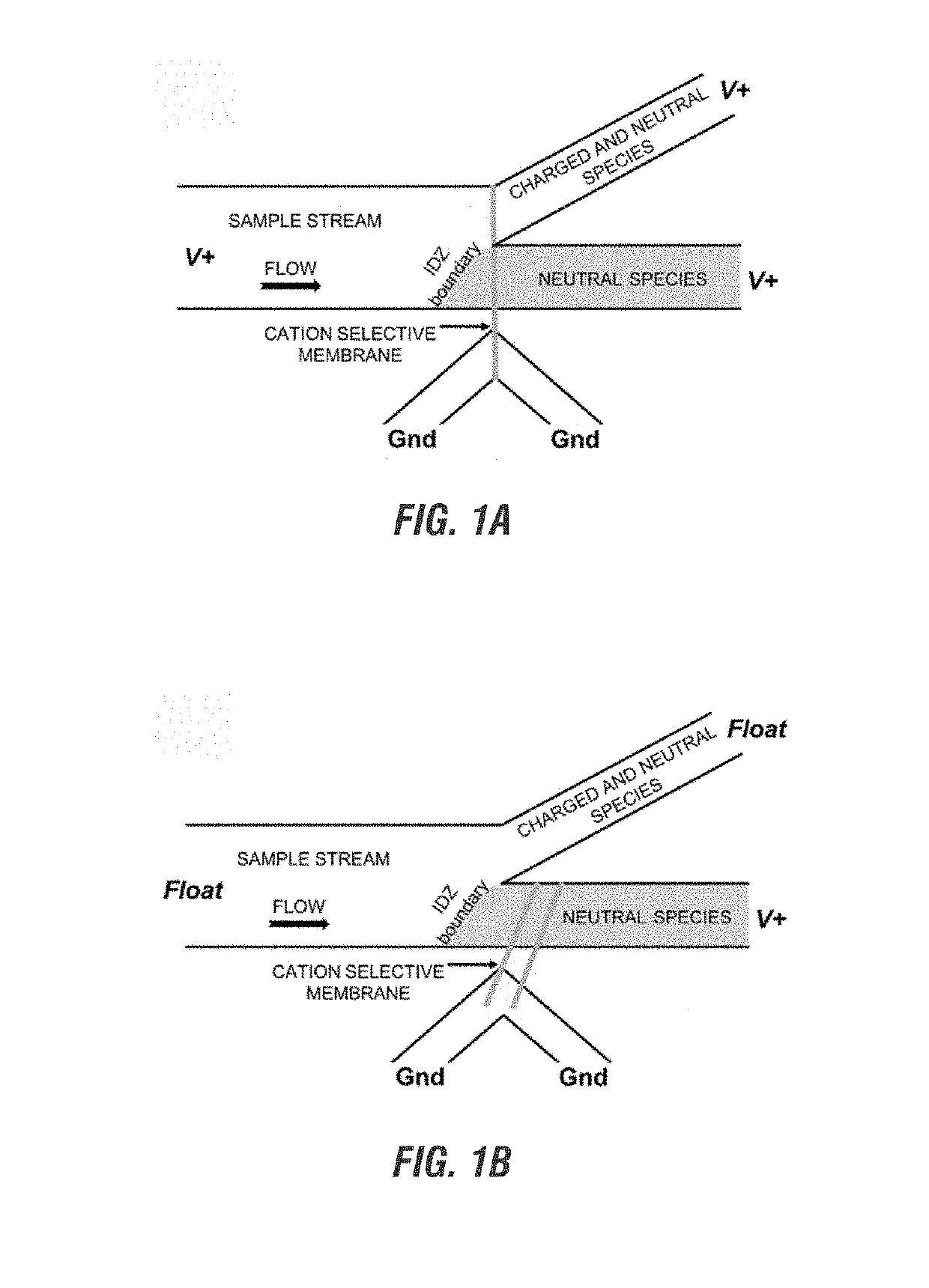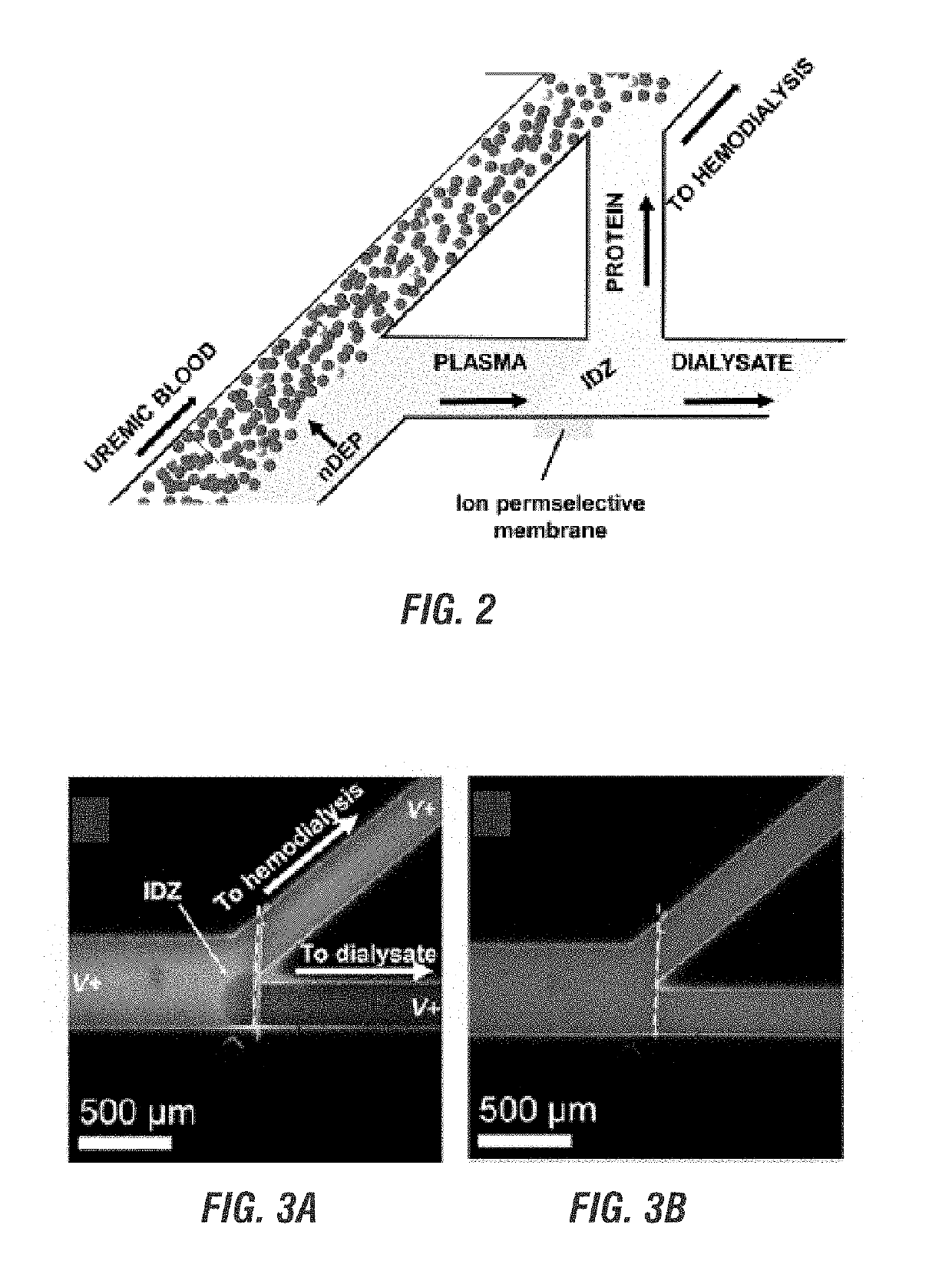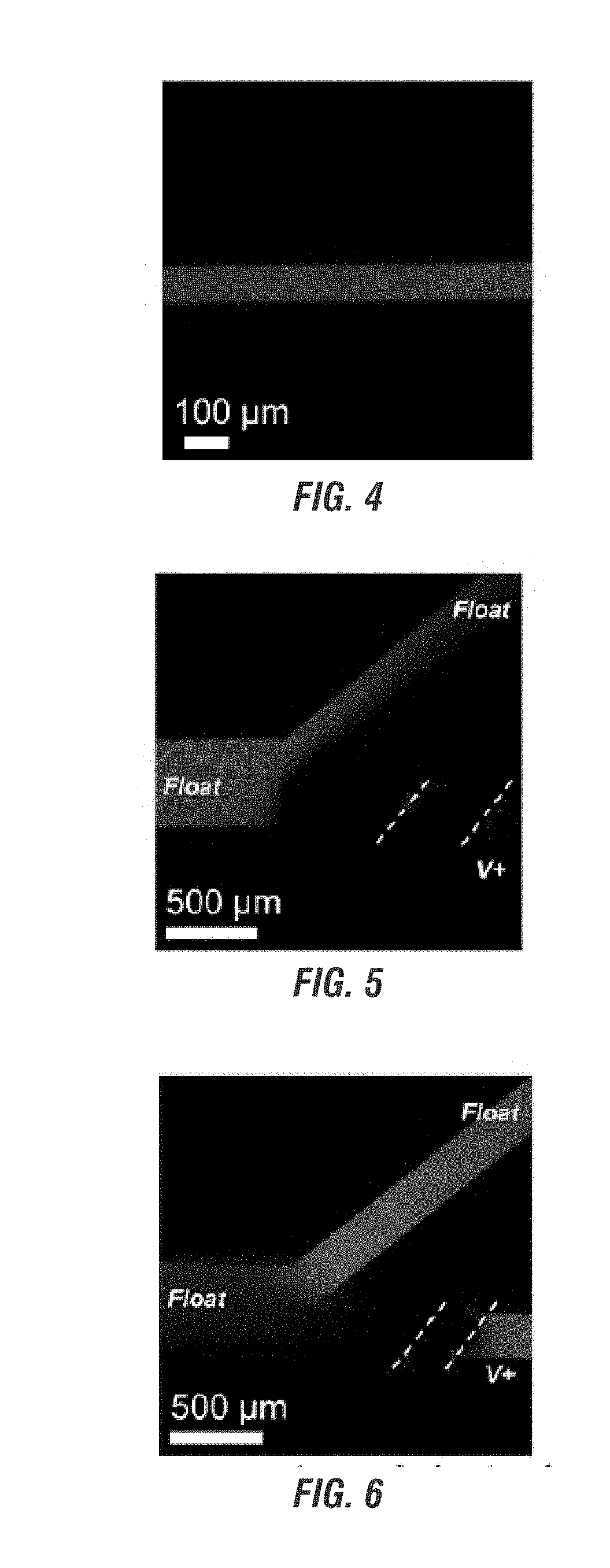Electrokinetic route to a wearable device for kidney disease management
a wearable device and electrode kinetic technology, applied in the field of electrokinetic route to wearable device for kidney disease management, can solve the problems of dialysis patients' mortality, edema, shortness of breath and rapid pulse, and weight gain from fluid retention,
- Summary
- Abstract
- Description
- Claims
- Application Information
AI Technical Summary
Benefits of technology
Problems solved by technology
Method used
Image
Examples
example 1
[0100]Materials.
[0101]Texas Red dye-labeled albumin and the neutral (uncharged) fluorophore BODIPY FL (4,4-difluoro-4-bora-3a,4a-diaza-s-indacene) were obtained from Molecular Probes (Eugene, Oreg.). Human blood plasma sample (K2EDTA) was purchased from Discovery Life Sciences (Los Osos, Calif.), divided into 100 μL aliquots, stored frozen at 80° C., and thawed at 37° C. before use. All other solutions were made with reagent grade chemicals (Fisher Scientific, Waltham, Mass.) and diluted with double deionized water (18.2 MΩ·cm, Sartorius Arium Pro, Göttingen, Germany) before use to desired concentration. A solution which modeled the ionic strength and pH of blood consisted of a solution of 50.0 mM NaCl and 5.0 mM KCl in 20.0 mM carbonate buffer adjusted to pH 7.45 with 0.1 M HCl. Poly(dimethylsiloxane) (Sylgard 184 elastomer kit, Dow Corning Corp., Midland, Mich.) was used for device fabrication. Platinum electrodes (99.95%) were purchased from Strem Chemicals (Newburyport, Md.). A ...
example 2
[0121]Evaluation of Device Lifetime and Membrane Biofouling.
[0122]Prior to experiment the channels were rinsed with 10 mM phosphate buffer solution. In this experiment, the rinsing phosphate buffer was then replaced with fresh 10 mM phosphate buffer and the reservoir volumes were adjusted to 40 μl (inlet) and 20 μl (both outlets). Second, 30.0 V was applied at neutral stream reservoir of the main channel versus the auxiliary channel (ground). Third, the buffer solution in the inlet was replaced with 35.0 μL of 0.05 mg / mL dye-linked albumin in undiluted blood plasma. Finally, the volume of sample solution in the reservoirs was adjusted to 34.0 μL (inlet) and 14.0 μL (upper outlet) to generate flow from left to right. Neutral stream outlet remained unchanged. The driving voltage was adjusted to 40.0 V. Repulsion of the albumin at the IDZ boundary was observed as the plasma entered the main channel. Outlet reservoir volumes were adjusted every 20 minutes by increments of 0.1 μL. The vo...
example 3
[0125]Evaluation of Flow Vs Voltage Relationship: Run to Run Variance.
[0126]The microfluidic device was assembled according to Example 2. The Nafion membrane was located 0.320 / 0.440 mm from the junction in the neutral stream branch. Prior to the experiment, the channels were rinsed with 10 mM phosphate buffer solution. Undiluted blood plasma sample spiked with dye linked albumin was injected into the device using 0.50 mL Hamilton syringe with 1 mm PTF tubing. To control flow rate during the experiment, syringe pump was used. The voltage was increased every 1 minute after which fluorescence micrograph was taken and intensity profiles of neutral stream branch analyzed. The flow was then increased and allowed to equilibrate for 10 minutes and voltage sequence repeated. The tested flow rate range was from 5 to 70 nL / min, voltage range from 5.0 V to 55.0 V. In between runs, the flow rate was allowed to equilibrate for 30 minutes.
Obtained data indicate that high separation efficiency can ...
PUM
 Login to View More
Login to View More Abstract
Description
Claims
Application Information
 Login to View More
Login to View More - R&D
- Intellectual Property
- Life Sciences
- Materials
- Tech Scout
- Unparalleled Data Quality
- Higher Quality Content
- 60% Fewer Hallucinations
Browse by: Latest US Patents, China's latest patents, Technical Efficacy Thesaurus, Application Domain, Technology Topic, Popular Technical Reports.
© 2025 PatSnap. All rights reserved.Legal|Privacy policy|Modern Slavery Act Transparency Statement|Sitemap|About US| Contact US: help@patsnap.com



